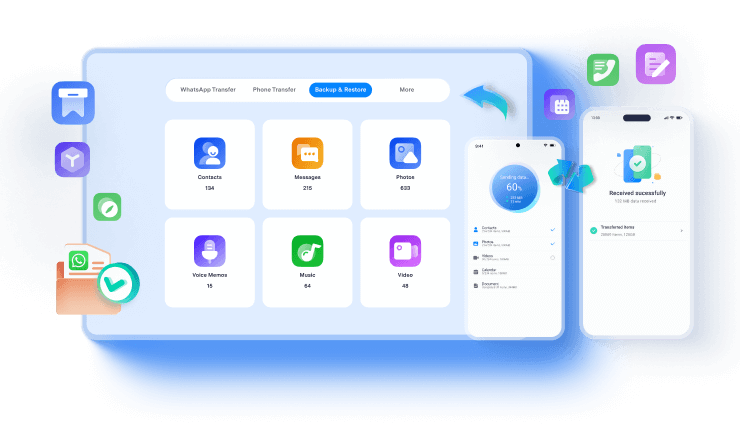7 Little Known Advantages and Disadvantages of Mobile Device Management (MDM)

Written By Axel Nash |

Thanks to their pocket-friendly prices and extensive reliability, mobile phones have become a norm in big organizations. They help the employees streamline various daily operations and execute them with better precision. But, integrating mobility into an enterprise-level organization (or a startup) isn’t as straightforward as you think.
To ensure that all the mobile phones are in compliance with the company’s guidelines, it’s crucial to use a dedicated MDM application.
Read this guide to further understand the advantages and disadvantages of MDM implementation in a company and decide how MDM can help you boost productivity in your organization as well.
Part 1: Secrets To MDM - What is Mobile Device Management Used For?
The general idea behind this is to control the overall usability of mobile devices. Using an MDM tool, you can define the security mechanism, add or remove applications, change device settings, etc.

Part 2: Things You Didn't Know about Advantages of Mobile Device Management
Now that you’re familiar with how Mobile Device Management works, let’s dive into the advantages of MDM and why companies need it in2021.
1. Remote Management for Devices

Remote management is the primary reason why you should consider MDM implementation for your organization. When your company has thousands of mobile devices, it can become quite challenging to manage them and implement the best security mechanisms. As a result, the devices become vulnerable to unexpected security concerns and major data thefts.
Fortunately, that’s not the case with an MDM solution. Using your MDM tool, you can remotely deploy the right security mechanism across all the devices and keep them safe. Remote management also makes it easier to monitor the user activities and ensure that none of the employees could access unauthorized content on their devices.
2. Better Security

Improved security is another crucial factor that makes MDM implementation useful in modern-day enterprises. When employees bring their own devices to the organization, it’s quite possible that an unauthorized user may break into the network and steal information. Not to mention, the BYOD (Bring Your Own Device) policy puts your company’s valuable data on the line.
But, when you implement Mobile device management, it becomes easier to protect a company’s sensitive data against theft. With an MDM solution, you can decide what type of data your employees could access. You could even update the app permissions so that none of the unauthorized third-party apps can access your organization’s sensitive data.
3. Data Backups

One of the major advantages of MDM is its ability to automatically backup essential data from all the devices. Using an MDM solution, you can configure all the devices in your network to automatically back up data to the main server.
This way even if one device goes missing or stops working, you won’t have to deal with data loss at all. You’ll be able to easily retrieve all the essential files from the backup and keep the business operations running.
4. Caters to Brand Scalability

Scalability is another factor that makes Mobile Device Management (MDM) better than regular IT management. By implementing an MDM solution, you get the liberty to manage thousands of devices simultaneously. This means even if you hire 1,000 employees together (an uncommon case), you won’t have to worry about device management at all.
All you need to do is configure the MDM solution according to the increased objectives of your organization and keep the operations running. So, if you’re planning to scale your business in the near future, using an MDM solution will prove to be beneficial.
5. Cost-Effective

While it may sound a bit surprising, using an MDM solution is cost-effective for your organization as well. With an MDM solution, you can easily implement the Bring Your Own Device (BYOD) policy. This way you won’t have to spend thousands of dollars on buying mobile phones for your organization.
And, since you’ll be adding a dedicated security mechanism via the MDM solution, you won’t have to worry about data theft or other security concerns either.
6. Virtually Control Mobile Updates

In any organization, installing software updates on smartphones is the biggest challenge. To ensure that all the devices are up-to-date, the admin has to manually check each device, which is nothing but time-consuming.
But, with MDM implementation, even software updates can be streamlined without any hassle. With one click, you can install all the latest software updates across all the devices and save your valuable time.
7. Application Management

Finally, application management is one of the other advantages of MDM that make it a useful asset for modern-day organizations. The admin can virtually install new apps and even remove unnecessary applications from all the devices. This also makes it easier for the admin to virtually manage storage across all the devices and keep the devices clutter-free.
Part 3: Little Known Disadvantages of Mobile Device Management
Like everything else, even Mobile Device Management comes with a few drawbacks. Let’s walk you through some of the disadvantages of MDM implementation that many organizations have to deal with.
❶ Required Security Audit Reports
It’s crucial to perform regular security audits and generate dedicated reports. Unfortunately, security auditing is a time-consuming task and also requires a significant workforce.
❷ System Integration
If you are running managing multiple mobile devices in your organization, it’ll be crucial that your backend could manage the increased load. In case your current backend doesn’t support extensive traffic, you’ll have to customize it or replace it with a more robust back-end, which will again become time-consuming and expensive.
❸ Defining Company Policies
You’ll first have to define company policies and then customize the MDM preferences accordingly. But, to define the company policies, you’ll need IT experts who have expertise in implementing MDM solutions
Key Takeaways from This Episode
● So, that concludes our guide on the top advantages and disadvantages of MDM implementation in an organization.
● At this point, it’s quite clear that MDM implementation is useful for all businesses, be it big or small.
● With the right MDM implementation approach, you’ll be able to meet the mobility requirements in your organization more easily and ensure data security as well.
New Trendings
Top Stories
All Categories








Axel Nash
staff Editor